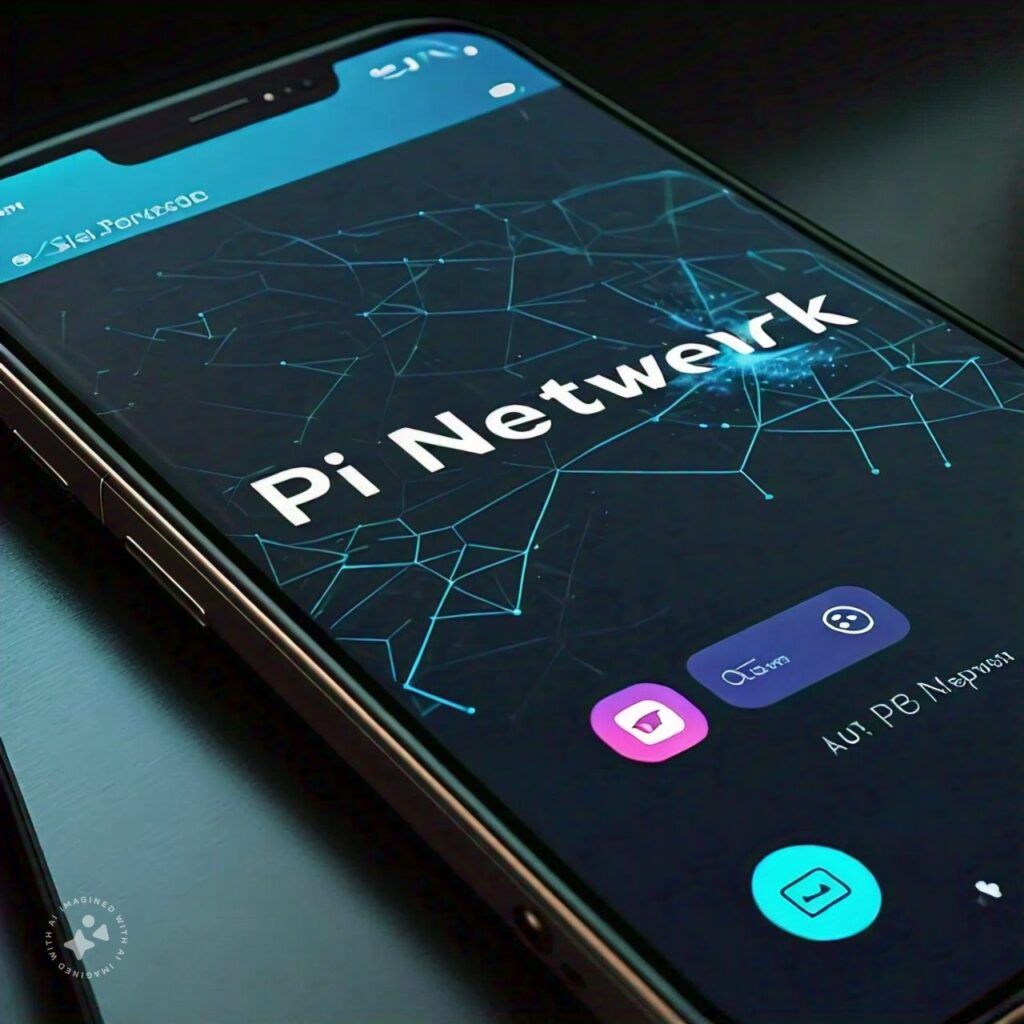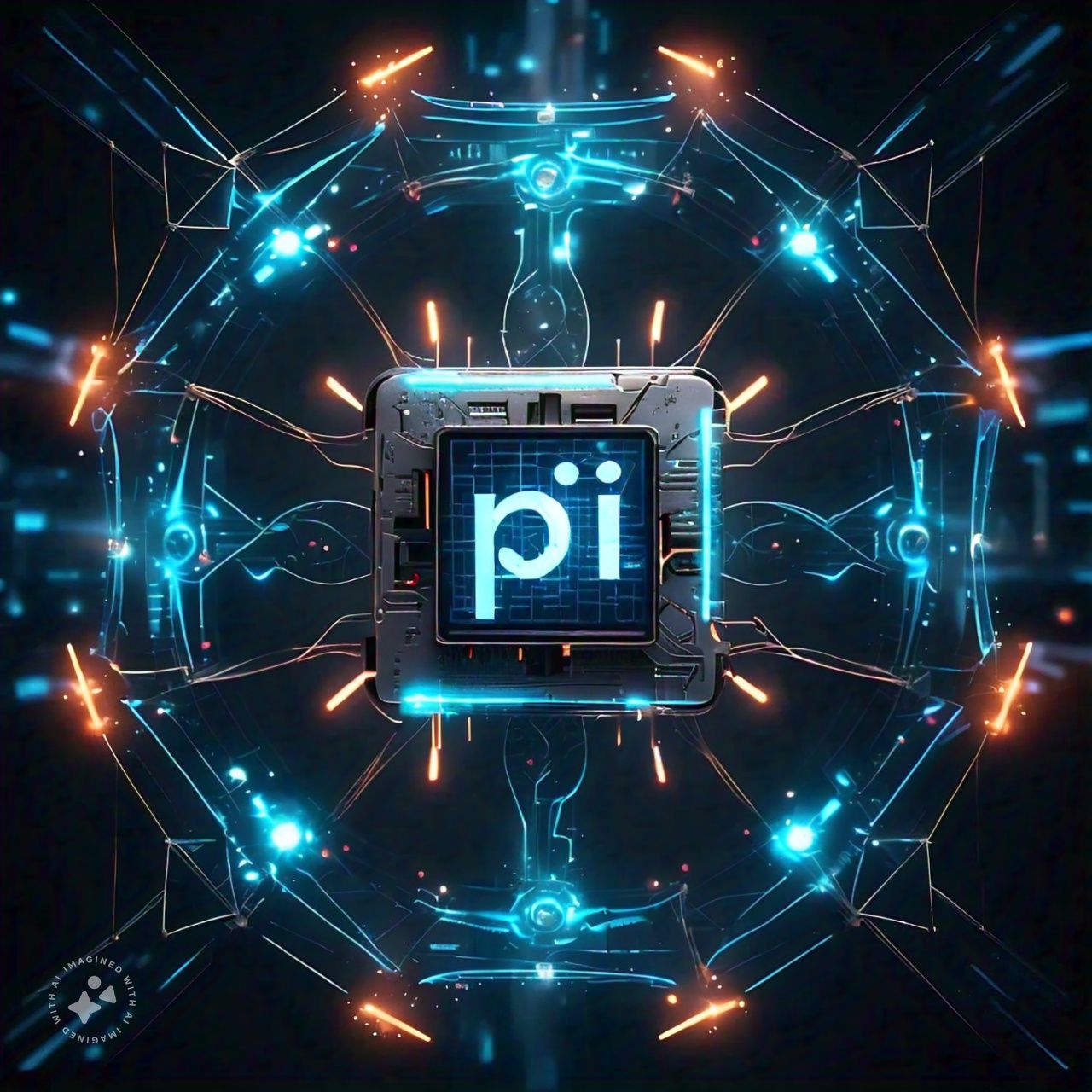PI Network Real or Fake
Pi Network is a cryptocurrency project that aims to make mining more accessible to everyday users through a mobile app. PI Network Real or Fake Founded by a team of Stanford graduates, Pi Network began in 2019, offering users the ability to “mine” Pi currency from their smartphones without consuming significant energy, unlike Bitcoin’s energy-intensive mining.
what is PI Network?

Pi Network is a cryptocurrency project designed to allow users to “mine” Pi coins using a mobile app, aiming to make cryptocurrency accessible to everyday people without requiring powerful computing hardware. Founded in 2019 by a team of Stanford graduates, including Dr. Nicolas Kokkalis and Dr. Chengdiao Fan, Pi Network aims to address the accessibility challenges of traditional cryptocurrencies like Bitcoin and Ethereum, where mining can be costly and resource-intensive.
Key Elements of Pi Network
Mobile Mining:
- Pi Network allows users to earn (or “mine”) Pi cryptocurrency by simply opening the Pi Network app and pressing a button daily to confirm their participation.
- Unlike traditional cryptocurrency mining, which consumes significant electricity, Pi mining is energy-efficient and does not drain the phone’s battery.
Consensus Protocol:
- Pi Network uses a consensus algorithm based on the Stellar Consensus Protocol (SCP), which requires trust-based validation rather than computational mining.
- Instead of relying on Proof of Work (PoW) like Bitcoin, Pi relies on “security circles” (groups of trusted users) to validate transactions, making the network secure without requiring high-power hardware.
User Roles:
- Pioneer: Regular users who press the mining button daily to earn Pi at the base rate.
- Contributor: Users who add trusted individuals to their security circles, which helps secure the network.
- Ambassador: Users who invite others to join Pi, earning additional rewards for each new user.
- Node: Users who run Pi Network software on a computer, supporting the network’s infrastructure and validating transactions.
Enclosed Mainnet Phase:
- Pi Network is currently in an “enclosed Mainnet” phase, meaning users can transact Pi within the Pi Network ecosystem but cannot trade it on external exchanges.
- The enclosed Mainnet allows Pi Network to build and refine its ecosystem before making it publicly accessible.
Open Mainnet:
- In the future, Pi Network plans to move to an “Open Mainnet” phase, where Pi could be listed on public cryptocurrency exchanges, enabling it to have a market-based value.
- This phase would allow Pi to be used for real-world transactions and integrated with other blockchain networks.
Community and Ecosystem Development:
- Pi Network has gathered a large global community with millions of users, as the entry barrier is low—anyone with a smartphone can join.
- The project aims to create a decentralized ecosystem where users can use Pi for goods, services, and potentially in decentralized applications (dApps).
Potential and Criticism
- Potential: Pi Network’s user-friendly approach to mining has attracted significant interest, making it one of the most widely adopted crypto projects by user count.
- Criticism and Skepticism: Some question Pi Network’s lack of transparency (such as not fully open-sourcing its code) and the absence of a real, market-based value for Pi. Critics also wonder if the project will reach its goal of creating an Open Mainnet with tradable value.
Pi Network aims to democratize cryptocurrency by making it accessible to anyone with a smartphone, but its ultimate value and success will depend on its full launch, real-world use cases, and community adoption beyond the app.
Is PI Network Real or Fake?
The Pi Network is a real, ongoing cryptocurrency project with a large user base, developed by a team that includes graduates from Stanford University. However, its long-term success and potential value remain uncertain, so it’s often met with mixed reactions in the crypto community. Here’s a breakdown of the arguments for both sides:
Reasons Why Pi Network Could Be Considered Real
- Legitimate Team: Pi Network was founded by a group of Stanford graduates, which adds some credibility. The team includes Dr. Nicolas Kokkalis, who has a background in blockchain technology and social computing.
- Unique Concept: The project aims to make cryptocurrency accessible to everyone, using a mobile app that doesn’t drain resources like traditional mining. This accessibility has made it popular, with millions of people “mining” Pi on their phones.
- Gradual Development: Pi Network has moved through development phases, including test net launches and ecosystem developments. The current roadmap indicates a Main net launch, where Pi is expected to become a fully functional cryptocurrency with tradeable value.
- Free Participation: Users are not required to invest money; they simply check in daily on the app to earn Pi. This has helped it avoid typical hallmarks of scams, which often demand upfront payments or investments.
Reasons Why Pi Network Could Be Considered Suspicious
- Uncertain Value: Pi currently has no actual value or liquidity on exchanges, meaning users cannot trade it or use it for purchases outside the app until the Mainnet launches. This lack of real-world value has led some to question its legitimacy.
- Data and Privacy Concerns: Since the app gathers data on millions of users, some critics worry that the project could prioritize data collection over actual cryptocurrency value.
- Delay in Main net Launch: The Main net, where Pi is expected to become fully decentralized and tradeable, has been delayed, which fuels skepticism. Without an active Main net, Pi remains speculative, and its value is hypothetical.
- Marketing-Driven Growth: Pi heavily relies on user referrals for growth, similar to multi-level marketing (MLM) models. Though referrals aren’t required, the emphasis on recruiting others has caused skepticism.
Is Pi Network a Scam?
While Pi Network doesn’t demand money from users, it’s best to approach it with caution due to the speculative nature of its value. It’s possible that Pi could succeed and become valuable, but there is also the risk it could end up as a low-value or non-valuable token. Users interested in Pi should be mindful of privacy concerns and recognize that its potential value remains unproven.
In Summary: Pi Network is a real project but one that’s still in development. Until it launches on the Main net and proves its value on exchanges, it’s wise to remain cautiously optimistic without expecting guaranteed financial returns.
How Does it Works Pi Network?
1. Mining on Pi Network:
- Mobile Mining: Pi Network allows users to “mine” its cryptocurrency, known as Pi, using a mobile app. However, the app does not involve actual cryptographic mining on the device itself. Instead, it verifies users’ participation through periodic checks and rewards users with Pi based on the time they spend active in the network.
- No Battery Drain: Mining Pi doesn’t consume extensive computational resources, meaning it doesn’t drain your phone’s battery or use significant data. Users tap a button daily to start a mining session and maintain an active status in the network.
2. Roles in the Pi Network:
- Pioneer: A basic member of the network who checks in daily to mine Pi.
- Contributor: A user who provides a list of trusted members, helping to create a network of verified participants.
- Ambassador: A user who invites new members to the network, earning additional Pi for referrals.
- Node: Users who install the Pi Node software on their computers, which will eventually help run the network’s decentralized ledger once Pi fully launches on the blockchain.
3. Security and Trust System:
- Pi Network uses a consensus algorithm based on the Stellar Consensus Protocol (SCP). Instead of relying on resource-intensive “proof of work,” the Pi Network depends on a security circle model, where users verify each other’s trustworthiness in the network. Security circles are groups of trusted individuals built by each user to enhance security and prevent malicious actors.
4. Phases of Development:

- The Pi Network is in a phased rollout. As of now:
- Phase 1: Users accumulate Pi by “mining” on their phones.
- Phase 2: Testing is conducted on a test net, allowing developers to build and test apps within the Pi ecosystem.
- Phase 3 (Main net): Pi Network will fully transition to a decentralized blockchain. At this point, users will be able to use or exchange their Pi coins outside of the Pi app.
5. Monetary Value and Usage:
- Currently, Pi has no real monetary value, as it is not yet tradeable on exchanges. The project’s team intends for Pi to gain value when it reaches the Main net phase, where users can use Pi for transactions or exchange it with other cryptocurrencies and fiat.
6. Risks and Considerations:
- Since Pi is not yet live on any public exchange, it’s speculative whether it will have value once launched. It’s free to participate, but users should be aware of the potential that Pi may not succeed or that its value could remain low.
Conclusion
In conclusion, Pi Network offers a novel approach to cryptocurrency by allowing users to “mine” on their mobile phones without heavy energy costs, using a social consensus model for security. While it is still in the development phase, with no tradeable value yet, Pi has generated significant interest due to its accessibility. However, its future value remains uncertain until it fully launches on the blockchain (Main net) and is supported on public exchanges. For now, it’s a speculative project that’s free to join but should be approached with cautious optimism.
Frequently Asked Question
Here are some frequently asked questions (FAQ) about the Pi Network:
1. What is Pi Network?
- Pi Network is a cryptocurrency project designed to allow users to “mine” Pi coins on their mobile phones without heavy energy or computational costs. It uses a mobile app and a unique consensus model to enable easy access to cryptocurrency.
2. How does mining Pi on mobile work?
- Mining Pi involves pressing a button in the Pi app once every 24 hours to activate a mining session. Unlike traditional mining, this process does not require significant processing power, so it doesn’t drain the phone battery or use a lot of data.
3. Is Pi Network safe to use?
- Pi Network doesn’t require users to invest money, and mining does not seem to use excessive phone resources. However, as with any cryptocurrency project, users should be cautious and consider security best practices. There is still some debate on its long-term potential.
4. Can I withdraw or exchange Pi?
- Not yet. Currently, Pi cannot be withdrawn, sold, or traded on any exchanges as it’s still in the testing phase. The project plans to enable transactions when it reaches its Main net phase, where Pi will become a fully tradeable cryptocurrency.
5. When will Pi Network launch on the Main net?
- There is no fixed date, but Pi Network is currently progressing through development phases. The transition to Main net is expected to be the final phase, after which Pi should become usable for transactions and tradeable on exchanges.
6. How is Pi different from Bitcoin?
- Pi Network does not use energy-intensive mining algorithms like Bitcoin. Instead, it uses a consensus model involving security circles to verify user authenticity. Pi also aims to be more accessible, allowing anyone with a mobile device to participate.
7. What are Pi roles like Pioneer, Contributor, and Ambassador?
- Pioneer: A basic user who mines Pi by logging into the app daily.
- Contributor: A user who builds a security circle by adding trusted individuals, which helps secure the network.
- Ambassador: A user who invites others to join Pi, earning additional Pi as a reward.
8. Does Pi have any real value?
- Not at the moment. Pi has no real value on exchanges until it reaches the Mainnet and becomes tradeable. Its value is expected to depend on supply, demand, and network adoption at that stage.
9. Is Pi Network a scam?
- Pi Network is a legitimate project by a team of Stanford graduates, but its success and value are not guaranteed. Since it’s free to join, it doesn’t operate as a traditional scam. However, as with any emerging project, users should approach with caution.
10. How do I earn more Pi?
- Users can increase their mining rate by building a security circle, inviting others to the network as an Ambassador, and engaging in the app regularly. The mining rate may also vary based on the total number of users and phases of the project.
11. Is my Pi balance secure?
- Your Pi balance is associated with your account and should be secure as long as you follow security practices, like using a strong password. However, since it’s still a centralized testnet, final security will be in place upon Mainnet launch.
12. Will Pi have value on the Mainnet?
- The Pi Network team aims for Pi to have value once it reaches the Mainnet, where users can trade and use Pi in the marketplace. However, the market value will ultimately depend on adoption and market interest.







